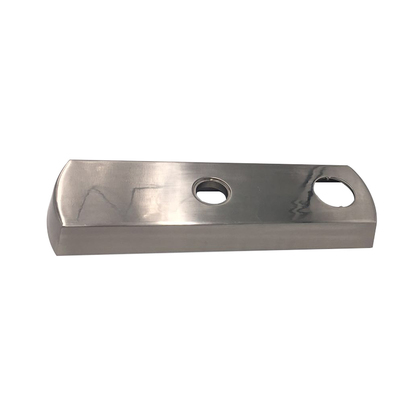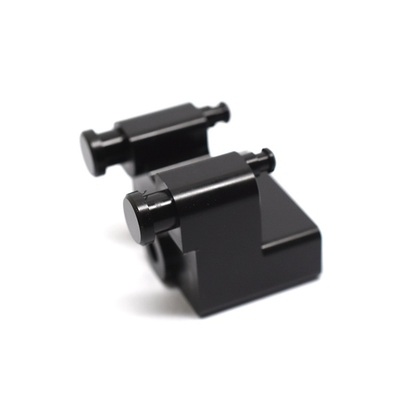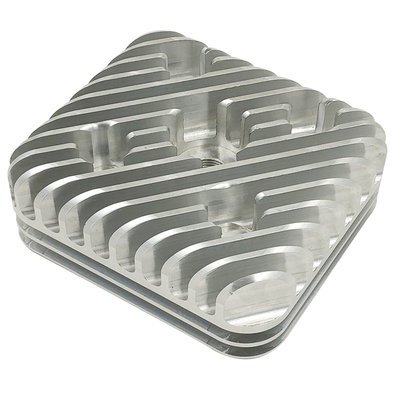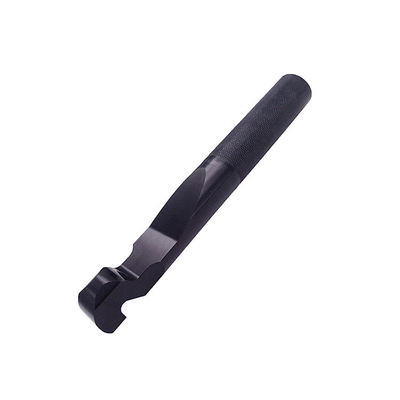CNC Machining Error Tracing and Sub-Micron Compensation Using Grating Interferometers
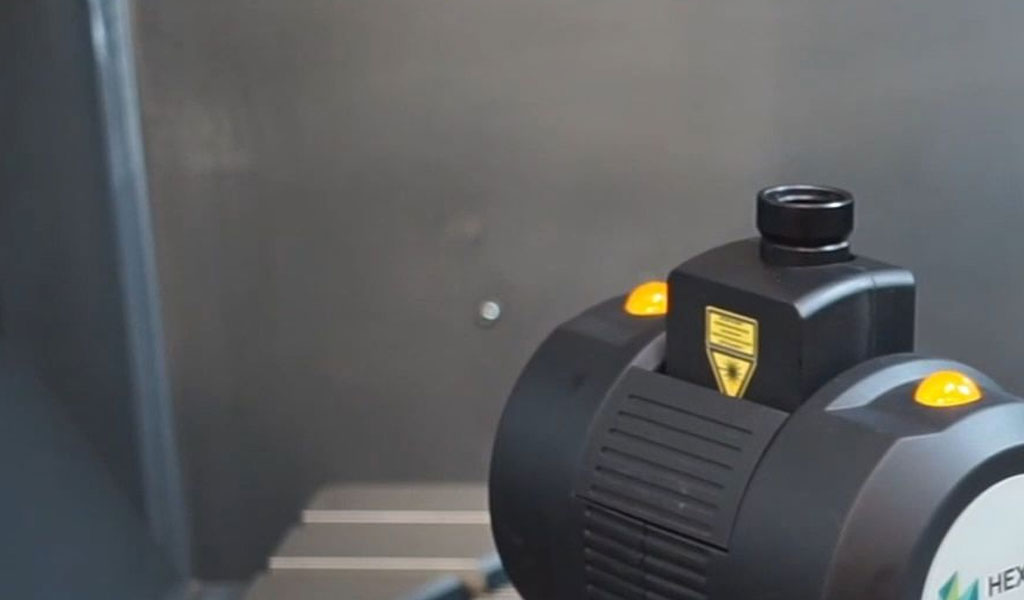
Computer Numerical Control (CNC) machining represents a cornerstone of modern manufacturing, enabling the production of complex components with high precision across industries such as aerospace, automotive, and medical device manufacturing. CNC machines operate by translating digital instructions into precise mechanical movements, controlling tools and workpieces through multiple axes to achieve desired geometries. However, achieving sub-micron precision—accuracy at the scale of less than one micrometer (1 µm)—remains a significant challenge due to various error sources inherent in CNC systems. These errors include geometric inaccuracies, thermal deformations, kinematic deviations, and environmental influences, all of which can compromise the dimensional accuracy of machined parts.
The pursuit of sub-micron precision has driven significant research into error tracing and compensation techniques. Among these, grating interferometers have emerged as a powerful tool for high-resolution measurement and compensation of machining errors. Unlike traditional laser interferometers, grating interferometers offer advantages in stability, resolution, and adaptability to varying environmental conditions, making them particularly suitable for ultra-precision machining applications. This article provides a comprehensive exploration of recent advancements in CNC machining error tracing and sub-micron compensation algorithms, with a focus on the application of grating interferometers. It synthesizes findings from academic research, industry practices, and technological developments to offer a detailed understanding of this field.
Fundamentals of CNC Machining Errors
Types of Errors in CNC Machining
CNC machining errors can be broadly categorized into several types, each contributing to deviations from the intended geometry of a workpiece. These include:
-
Geometric Errors: Arising from imperfections in the machine's components, such as guideways, spindles, and bearings, geometric errors manifest as positioning inaccuracies, straightness deviations, angular errors (pitch, yaw, roll), and squareness errors. For a three-axis CNC machine, there are typically 21 geometric error parameters, including six errors per axis (positioning, two straightness errors, and three angular errors) plus three squareness errors between axes.
-
Thermal Errors: Thermal deformations, caused by heat generated from spindle rotation, cutting processes, or ambient temperature variations, account for approximately 60–70% of total machining errors in high-precision CNC systems. These errors lead to relative displacements between the tool and workpiece, affecting dimensional accuracy.
-
Kinematic Errors: Resulting from inaccuracies in the motion control of multi-axis systems, kinematic errors are particularly pronounced in five-axis machines where rotary axes introduce nonlinear deviations in tool paths.
-
Cutting Force-Induced Errors: Forces generated during material removal can cause deflections in the tool, workpiece, or machine structure, leading to dimensional inaccuracies.
-
Environmental Errors: Variations in ambient conditions, such as temperature, humidity, or vibration, can influence measurement accuracy and machine performance.
Importance of Sub-Micron Precision
Sub-micron precision is critical in industries requiring ultra-high accuracy, such as semiconductor manufacturing, optical component fabrication, and precision engineering. Achieving tolerances below 1 µm ensures that components meet stringent performance requirements, such as optical clarity in lenses or precise alignment in microelectronics. However, traditional error compensation methods, such as those relying on laser interferometers, face challenges in achieving sub-micron resolution due to limitations in measurement stability and environmental sensitivity.
Grating Interferometers: Principles and Advantages
Operating Principle of Grating Interferometers
Grating interferometers are optical measurement systems that utilize diffraction gratings to measure displacement with high precision. A diffraction grating, typically a glass or metal substrate with periodic rulings, splits an incident light beam into multiple diffraction orders. By analyzing the interference patterns created by these diffracted beams, grating interferometers can detect minute changes in position, often at the nanometer scale.
The basic setup includes a light source (commonly a laser), a diffraction grating mounted on the moving component (e.g., the machine tool's slide), and a detector system. When the grating moves relative to the light source, the interference pattern shifts, producing a signal that correlates with displacement. This signal is processed to determine the position with high accuracy. Unlike laser interferometers, which rely on the interference of laser beams over long distances and are sensitive to air turbulence, grating interferometers use a compact setup, making them less susceptible to environmental disturbances.
Advantages Over Laser Interferometers
Grating interferometers offer several advantages over traditional laser interferometers for CNC machining applications:
-
Higher Stability: The short optical path in grating interferometers reduces sensitivity to environmental factors like air turbulence and temperature gradients, which can degrade the performance of laser interferometers.
-
Nanometric Resolution: Grating interferometers can achieve resolutions as fine as 1 nm, making them ideal for sub-micron applications.
-
Adaptability to Materials: The thermal expansion coefficient of the grating substrate can be matched to the machine or workpiece material, minimizing errors due to thermal expansion mismatches.
-
Compact Design: The compact nature of grating interferometers allows for easier integration into CNC machine tools compared to bulky laser interferometer systems.
Limitations and Challenges
Despite their advantages, grating interferometers face challenges, including:
-
Complex Signal Processing: The interference signals require sophisticated algorithms to extract accurate displacement data, especially in the presence of noise or misalignment.
-
Grating Fabrication: Producing high-quality diffraction gratings with consistent periodicity is costly and technically demanding.
-
Sensitivity to Angular Errors: Misalignment of the grating or optical components can introduce errors, necessitating precise calibration.
Error Tracing in CNC Machining
Overview of Error Tracing
Error tracing involves identifying and quantifying the sources of errors in a CNC machining process. This process is critical for developing effective compensation strategies. Error tracing typically employs high-precision measurement systems to capture data on machine tool movements, followed by mathematical modeling to isolate individual error components.
Role of Grating Interferometers in Error Tracing
Grating interferometers are particularly effective for error tracing due to their high resolution and stability. They can measure multiple degrees of freedom (DOF) simultaneously, including linear positioning, straightness, and angular errors. For example, in a three-axis CNC machine, a grating interferometer can detect the six geometric errors associated with each axis (positioning, two straightness errors, and three angular errors) by analyzing the interference patterns generated during axis motion.
Recent research has demonstrated the use of grating interferometers in multi-station measurement setups, where multiple interferometers are synchronized to capture volumetric errors across the machine's workspace. For instance, a study on gantry-type CNC machines utilized four-station grating interferometers to achieve rapid and high-precision error measurement, improving upon traditional single-station methods.
Measurement Techniques
Several techniques leverage grating interferometers for error tracing:
-
Single-Axis Measurement: A grating interferometer is mounted on a single axis to measure positioning and straightness errors. This method is straightforward but limited to one-dimensional error detection.
-
Multi-Axis Measurement: By combining multiple grating interferometers, researchers can capture errors across multiple axes simultaneously, enabling volumetric error mapping.
-
Dynamic Motion Analysis: Grating interferometers can track continuous motion paths, identifying dynamic errors caused by high-speed operations or vibrations.
-
Angular Error Detection: Specialized setups use grating interferometers to measure pitch, yaw, and roll errors by analyzing the angular displacement of interference patterns.
Case Studies in Error Tracing
A notable case study involved the use of grating interferometers to measure geometric errors in a five-axis CNC machine. Researchers employed a multi-station setup with synchronized interferometers to capture the 41 error parameters associated with the machine's linear and rotary axes. The results showed a reduction in measurement time compared to laser-based methods, with positioning accuracy improved to within 0.5 µm.
Another study focused on ultra-precision diamond turning machines, where grating interferometers achieved a straightness error measurement resolution of several hundred nanometers over the full travel range. This high resolution enabled precise identification of error sources, facilitating targeted compensation strategies.
Sub-Micron Compensation Algorithms
Principles of Error Compensation
Error compensation involves adjusting the CNC machine's control system to correct for identified errors, ensuring that the tool follows the desired path. Sub-micron compensation requires algorithms that can process high-resolution measurement data and generate precise corrections in real time or offline. These algorithms typically involve:
-
Error Modeling: Developing mathematical models that describe the relationship between measured errors and machine movements.
-
Compensation Implementation: Modifying the Numerical Control (NC) code or machine controller parameters to account for errors.
-
Feedback Mechanisms: Using real-time data from sensors like grating interferometers to dynamically adjust tool paths.
Grating Interferometer-Based Compensation
Grating interferometers provide the high-resolution data needed for sub-micron compensation. The interference signals are processed to generate error maps, which are then used to adjust the machine's tool path. Common compensation approaches include:
-
Offline Compensation: Error data is collected and used to modify the NC code before machining begins. This method is effective for stable, repeatable errors but does not account for dynamic changes during machining.
-
Online Compensation: Real-time data from grating interferometers is fed into the machine controller, allowing dynamic adjustments to the tool path. This approach is more complex but essential for compensating thermal and dynamic errors.
-
Hybrid Compensation: Combines offline and online methods, using pre-measured error maps for initial corrections and real-time data for fine-tuning.
Algorithm Development
Recent advancements in compensation algorithms leverage machine learning and advanced mathematical techniques to enhance accuracy. Key approaches include:
-
Polynomial Models: These models fit error data to polynomial functions, providing a continuous representation of errors across the machine's workspace. For example, Zhang et al. used polynomial models to compensate for thermal errors in large-scale workpieces, achieving sub-micron accuracy.
-
Neural Networks: Back-propagation neural networks have been used to model complex, nonlinear error patterns, particularly for cutting force-induced errors. These models can predict errors based on historical data, improving compensation accuracy.
-
Gaussian Process Regression (GPR): GPR models provide interval predictions of errors, accounting for uncertainty and improving robustness under varying conditions. A study on thermal error compensation using GPR achieved a significant reduction in prediction uncertainty.
-
QM-ANN (Quantum-Mechanical Artificial Neural Network): This advanced algorithm corrects angular errors in grating measurement systems, improving measurement precision by nearly five times.
Implementation Challenges
Implementing sub-micron compensation algorithms involves several challenges:
-
Computational Complexity: Real-time compensation requires fast processing of high-resolution data, necessitating powerful computing hardware.
-
Calibration Accuracy: The effectiveness of compensation depends on the accuracy of the grating interferometer's calibration, which can be affected by misalignment or environmental noise.
-
Dynamic Error Handling: Compensating for dynamic errors, such as those caused by thermal fluctuations or cutting forces, requires adaptive algorithms that can respond to changing conditions.
Recent Research Advancements
Innovations in Grating Interferometer Technology
Recent research has focused on improving the performance of grating interferometers for CNC applications. Advances include:
-
High-Resolution Gratings: New fabrication techniques have enabled the production of gratings with sub-nanometer periodicity, enhancing measurement resolution.
-
Multi-DOF Measurement: Systems capable of measuring multiple degrees of freedom simultaneously have been developed, reducing measurement time and improving accuracy.
-
Environmental Compensation: Algorithms that account for environmental factors, such as temperature and humidity, have been integrated into grating interferometer systems, improving measurement stability.
Integration with Machine Learning
Machine learning has revolutionized error compensation by enabling predictive models that adapt to complex error patterns. For example, a study by Guan et al. used deep learning to correct errors in grating sensors, achieving significant improvements in measurement stability. Similarly, ensemble learning and transfer learning have been applied to thermal error compensation, allowing models to generalize across different machining conditions.
Case Study: Multi-Station Synchronization
A 2024 study published in the Chinese Journal of Mechanical Engineering introduced a geometric error identification method for gantry-type CNC machines using multi-station synchronized grating interferometers. The method employed screw theory and topological analysis to model the machine's kinematic chain, achieving a measurement resolution of 0.1 µm. The study demonstrated a 55.8% reduction in maximum error and a 58.6% reduction in average error after compensation, highlighting the effectiveness of grating-based approaches.
Comparative Analysis of Measurement and Compensation Techniques
To provide a clearer understanding of the role of grating interferometers in CNC machining, the following table compares their performance with other common measurement systems:
|
Measurement System |
Resolution |
Stability |
Environmental Sensitivity |
Measurement Time |
Cost |
Applications |
|---|---|---|---|---|---|---|
|
Grating Interferometer |
1 nm |
High |
Low |
Fast |
Moderate |
Ultra-precision machining, multi-axis error tracing |
|
Laser Interferometer |
1 nm |
Moderate |
High |
Moderate |
High |
General CNC error measurement |
|
Ball Bar |
0.1 µm |
Moderate |
Moderate |
Slow |
Low |
Rotary axis calibration |
|
Capacitive Sensors |
10 nm |
High |
Low |
Fast |
Moderate |
Sub-micron positioning |
|
Tracking Interferometer |
0.5 µm |
High |
Moderate |
Fast |
High |
Large-scale volumetric error mapping |
Table 1: Comparison of Measurement Systems for CNC Error Tracing
The following table compares compensation algorithms used with grating interferometers:
|
Algorithm |
Accuracy |
Robustness |
Computational Complexity |
Real-Time Capability |
Applications |
|---|---|---|---|---|---|
|
Polynomial Models |
High |
Moderate |
Low |
Offline |
Geometric error compensation |
|
Neural Networks |
Very High |
High |
High |
Online/Offline |
Nonlinear error correction |
|
Gaussian Process Regression |
Very High |
Very High |
Moderate |
Online |
Thermal error compensation |
|
QM-ANN |
Very High |
High |
High |
Online |
Angular error correction |
Table 2: Comparison of Compensation Algorithms
Practical Applications and Industry Impact
Aerospace Industry
In aerospace manufacturing, where components like turbine blades require tolerances below 1 µm, grating interferometers have enabled significant improvements in machining accuracy. By integrating real-time compensation algorithms, manufacturers have reduced scrap rates and improved component performance.
Semiconductor Manufacturing
The semiconductor industry relies on ultra-precision machining for wafer fabrication equipment. Grating interferometers provide the necessary resolution to measure and compensate for errors in these systems, ensuring the production of defect-free microchips.
Medical Device Manufacturing
Medical devices, such as surgical implants, demand high precision to ensure biocompatibility and functionality. Grating-based compensation has been used to achieve sub-micron tolerances, enhancing the reliability of these critical components.
Future Directions and Challenges
Emerging Technologies
Future research is likely to focus on integrating grating interferometers with advanced technologies, such as:
-
Artificial Intelligence: AI-driven algorithms could enhance the adaptability of compensation systems, predicting errors under varying conditions.
-
Hybrid Measurement Systems: Combining grating interferometers with other sensors, such as capacitive or vision-based systems, could provide comprehensive error tracing.
-
Miniaturization: Developing smaller, more cost-effective grating interferometers could broaden their adoption in smaller CNC machines.
Research Challenges
Key challenges include:
-
Cost Reduction: Lowering the cost of high-precision gratings and interferometer systems to make them accessible to small and medium-sized enterprises.
-
Real-Time Processing: Improving the computational efficiency of compensation algorithms to enable real-time sub-micron corrections without latency.
-
Environmental Robustness: Enhancing the ability of grating interferometers to operate in harsh manufacturing environments with high vibration or temperature fluctuations.
Conclusion
Grating interferometers represent a transformative technology in the quest for sub-micron precision in CNC machining. Their high resolution, stability, and adaptability make them ideal for error tracing and compensation in ultra-precision applications. Recent research has demonstrated their effectiveness in measuring and correcting geometric, thermal, and kinematic errors, with advanced algorithms like neural networks and Gaussian process regression pushing the boundaries of accuracy. As industries continue to demand tighter tolerances, grating interferometers will play a pivotal role in shaping the future of precision manufacturing. Continued advancements in measurement technology, algorithm development, and system integration will further enhance their impact, ensuring that CNC machining meets the stringent requirements of modern engineering.
Reprint Statement: If there are no special instructions, all articles on this site are original. Please indicate the source for reprinting:https://www.cncmachiningptj.com/,thanks!
 PTJ® provides a full range of Custom Precision cnc machining china services.ISO 9001:2015 &AS-9100 certified. 3, 4 and 5-axis rapid precision CNC machining services including milling, turning to customer specifications,Capable of metal & plastic machined parts with +/-0.005 mm tolerance.Secondary services include CNC and conventional grinding, drilling,die casting,sheet metal and stamping.Providing prototypes, full production runs, technical support and full inspection.Serves the automotive, aerospace, mold&fixture,led lighting,medical,bicycle, and consumer electronics industries. On-time delivery.Tell us a little about your project's budget and expected delivery time. We will strategize with you to provide the most cost-effective services to help you reach your target,Welcome to Contact us ( [email protected] ) directly for your new project.
PTJ® provides a full range of Custom Precision cnc machining china services.ISO 9001:2015 &AS-9100 certified. 3, 4 and 5-axis rapid precision CNC machining services including milling, turning to customer specifications,Capable of metal & plastic machined parts with +/-0.005 mm tolerance.Secondary services include CNC and conventional grinding, drilling,die casting,sheet metal and stamping.Providing prototypes, full production runs, technical support and full inspection.Serves the automotive, aerospace, mold&fixture,led lighting,medical,bicycle, and consumer electronics industries. On-time delivery.Tell us a little about your project's budget and expected delivery time. We will strategize with you to provide the most cost-effective services to help you reach your target,Welcome to Contact us ( [email protected] ) directly for your new project.

- 5 Axis Machining
- Cnc Milling
- Cnc Turning
- Machining Industries
- Machining Process
- Surface Treatment
- Metal Machining
- Plastic Machining
- Powder Metallurgy Mold
- Die Casting
- Parts Gallery
- Auto Metal Parts
- Machinery Parts
- LED Heatsink
- Building Parts
- Mobile Parts
- Medical Parts
- Electronic Parts
- Tailored Machining
- Bicycle Parts
- Aluminum Machining
- Titanium Machining
- Stainless Steel Machining
- Copper Machining
- Brass Machining
- Super Alloy Machining
- Peek Machining
- UHMW Machining
- Unilate Machining
- PA6 Machining
- PPS Machining
- Teflon Machining
- Inconel Machining
- Tool Steel Machining
- More Material

